Prajna Prasad Sravan Kumar

To conclude my emotion packed farewell speech on a lighter note, I just mentioned my team mates at Cochin that its a shift from black eyes to rosy lips as I was all set to relocate to Kolkata. By rosy lips, I simply meant the Beautiful Bengal as the state tourism department tag line suggests and of course the Bong beauties and their unfathomed love for fashion in general and lip-stick in particular.
Though I was in deep sorrow to miss God’s own country, its people, their hospitality, especially the festivities of Onam and the beautiful black eyes, I was equally excited to come to Kolkata, the city of my childhood dream and explore the numerous ways it does infuse the sense of joy and happiness to its inhabitants and visitors through food, football and festival and experience the greatest autumn carnival, Dasahara, the Sharadotsav.
Being from a village where Makara Sankranti rules the roost as far as celebration of festival is concerned, Dasahara was not of prime importance in my childhood. It was just another festival which couldnt allure the imagination of a child with the remote chance of fetching a new dress and for the commoners in my immediate locality, its the time to clean the material possessions and decorate the sources of livelihood like hotels, shops, small business units and industries and offer prayers to Maa Durga. Even today, this is the festival when my father gets the invitation from the book store, grocery shop and the medicine store being a regular customer and get some gifts.
For small town shopkeepers, Durga Puja is the period of annual closure of credit accounts and starting of a new account journal. Even some shop owners mention the credit amount they yet to get from their customers in the invitation card of Durga Puja. Before joining in a junior college at Berhampur, the heart of South Odisha and getting the privilege of pandal hopping during Durga Puja, it was only the pandal in the local Electric Department office premises that we looked out for.
The much awaited part of puja was not the prayer, but the ancillary activities like entertainment programs and the various lottery schemes announced by the Puja organizing committees. Dance troops from Andhra performing semi nude dances were the most promising crowd pullers during puja. As I grew up, Puja became the time to satiate the literary mind by filling the cupboard with “Sharadiya Visheshanka of different magazines. Hence its obvious to feel goosebumps being at Kolkata during Dashahara and wait with bated breath to be a part of the greatest carnival in this part of the world.
 In the early morning of Mahalaya, which marks the beginning of Devi Pakshya and the end of Pitru Pakshya, the festive mood is uplifted and emotions pour in by listening to the devotional rendition of Mahisasuramardini by late Birendra Krishna Bhadra as a mark of invocation to the beloved Maa. From Purulia to Park Street, Bankura to Berhampore, Nadia to New Town, Malda to Midnapore, Digha to Darjeeling, the atmosphere is charged with festive fervor and filled with joy, excitement and the pious feeling of Maa asche. Puja is equally exciting for the unskilled Bengali working in a construction site to earn bread and butter and the onsite based white collared IT professionals.
In the early morning of Mahalaya, which marks the beginning of Devi Pakshya and the end of Pitru Pakshya, the festive mood is uplifted and emotions pour in by listening to the devotional rendition of Mahisasuramardini by late Birendra Krishna Bhadra as a mark of invocation to the beloved Maa. From Purulia to Park Street, Bankura to Berhampore, Nadia to New Town, Malda to Midnapore, Digha to Darjeeling, the atmosphere is charged with festive fervor and filled with joy, excitement and the pious feeling of Maa asche. Puja is equally exciting for the unskilled Bengali working in a construction site to earn bread and butter and the onsite based white collared IT professionals.
Maa is Maa and is without an iota of discrimination between the children whether the child has lost his childhood working in a brick kiln or gone out of the luxuries of home to chase his/her own dreams. While Durgotsav is an occasion of home coming for the destitute old Bengali widows living in the ashrams of Vrindavan, for the women of red light areas engaged in flesh trade, it is the festival to show the world that they have a life to lead with dignity.
Durga Puja is the launch pad for the creative and artistic minds in the form of never-used-before innovative themes, its proper execution, soul touching music tracks in awe of Maa and some sort of social messages to create a sense of belonging for the city and the state. Theme is the buzzword in the market during the festive season of Dashahara. Theme based pujas are the core of Kolkatas special distinction.
Every year various Puja committees come up with pandals exhibiting updated and contemporary ideas to lure the art-loving people. Legendary Bahubalis Mahismati Palace, the replica of Buckingham Palace, Big Ben and London Bridge, Lotus temple of Delhi, the skyscrapers of New York, Wat Rung Khun or the white temple of Thailand are few of the themes that have left an indelible mark in the hearts and minds of pandal hoppers.
The theme also varies from various burning issues like problem of urbanization, child labour and global warming to different government programmes and schemes like Beti Bachao, Beti Padhao of the Central Government, Kanyashree, the flagship programme of West Bengal Government and the much debated demonetization. Puja committees are in action with full enthusiasm in every para(street), in every block of the city, in every housing society and in every human habitation for the smooth management of the festival.
There is always a healthy competition among the puja organizers to outdo each other. The pandals are truly the perfect amalgamation of creativity, culture and parampara. The metro city houses more than three thousand pandals to showcase the artistic excellence of the people and the richness of the culture to the world.
The way the pandals are decorated may vary, the size of the idols may vary, the materials used for the decoration may vary, the area covered by the pandals may vary, but the ultimate love and devotion for Maa remains constant and is incredible.The four day carnival is the time for people of all social strata to forget the vagaries of life and just embrace happiness, eternity and redefine joy.
 While in northern part of India, Dasahara is celebrated mainly as a festival to mark the win of Lord Ram over the demon king Ravan and burning the effigy of the later is an integral part of its celebration, in the East, it is the festival of maa durga to celebrate her arrival through the means of Akalabodhana (untimely worship). In sociological point of view, it glorifies the importance of women in the society and especially in the life of man. During Puja, every woman appears to be an idol of Maa Durga in motion.
While in northern part of India, Dasahara is celebrated mainly as a festival to mark the win of Lord Ram over the demon king Ravan and burning the effigy of the later is an integral part of its celebration, in the East, it is the festival of maa durga to celebrate her arrival through the means of Akalabodhana (untimely worship). In sociological point of view, it glorifies the importance of women in the society and especially in the life of man. During Puja, every woman appears to be an idol of Maa Durga in motion.
Literally, the stunning beauties are chalta-phirta Durgas. Bengal beauties and saree have an inseparable relationship from time immemorial. No one will find women draping saree with such an elegance in any Indian cities other than Kolkata. Varieties of Sarees along with matching jewelries, perfect hair dos, multicolored bindis and colorful bangles make them enough to create a special place in the heart of their loved ones.
Every bong beauty is a high class fashionista. She is a perfect blend of classic with contemporary. They love to love and be loved and addressed as Sona by their loved ones. Beholding the Sonas in the Sonar Bangla is awesome.While on Mahastami, they prefer to go traditional in costume and look, on Nabami, they wish to be more trendy and modern. Mahastami is the day to impress the loved ones, express the unexpressed to garner lots of love, care and attention.
It may be a day to celebrate the strength and vigor of Maa Durga, but for the beauties, it is just another day to be enjoyed with full of romance and of course the blessings of Maa. They love to showcase their expertise in Dhunuchi Naach through the rhythms of Dhak, the traditional drum beats along with their male counterparts. Bengal politics may be marked with politics of paint, but the women world, especially the married one is colored in red on the Dashami day during the Sindoor Khela to show bonhomie and camaraderie. In true spirit, Durgotsav is the bridge that connects different hearts irrespective of caste, class and color like the Rabindra Sangeet does.
The unparalleled joy and euphoria comes to an end with the immersion of Maa Durga on or after Dashami taking into count the political and other social scenarios. The ambiance gives a feel of calm after calamity. The status-quo continues. Routine and mundane activities once again take the center stage.
The Durgotsav may be a manifestation of women power, a celebration that embodies the command of good over the evil, the common women is no more feeling safe on the streets. A significant portion of the news print and the air time in prime time news bulletin is flooded with the news related to the victimization of women in some part of the country or other.
The atrocities against women is in an alarming state. May Durga Maa, the goddess of women empowerment bestow women with all strength and courage to tackle the odds and adversities on their way and empower them to destroy the mahisasuras of the society.May the blessings of Maa establish communal harmony and help in maintaining social equilibrium. Let Bengalis unconditional love for Maa, misti and maach continue forever.
(Prajna Prasad Sravan Kumar is an IT Professional and currently based at Kolkata)



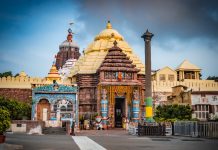





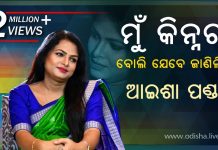
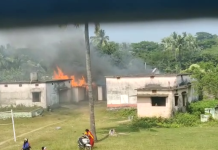
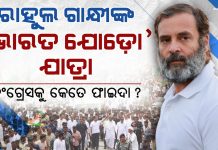
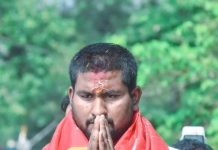


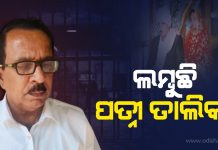
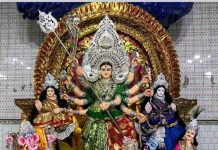



Nice story.
Good Information..Superb ..keep it bro
Very nice
Excellent thought bhai. Puja or festival is a one word but thousands meaning which is united the people of India from different caste, creed and religions. India is a land of fairs and festivals. It is so called because people of various religions live here and they all celebrate their fairs and festivals all through the year together. Bengalis are celebrating Durga puja on every part of the country irrespective of any religion. The famous Durga puja of Kashmir gate, New delhi was started by two Bengali christians. Where as in cuttack many muslims are the member of Durga puja committe. Hindus are joining their Muslims neighbours during Muharram processions in every part of our country.
U supposed to be an writter so being called coz ur unfathomed love towards the digging of root cause for anything .. splly for any festival and culture! Keep it up buddy .. god bless u
The details of the festival are well knitted. Keep writing.